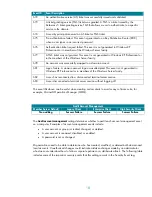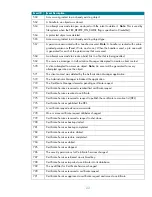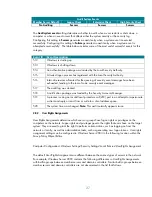
18
Event ID Event Description
672
An authentication service (AS) ticket was successfully issued and validated.
673
A ticket granting service (TGS) ticket was granted. A TGS is a ticket issued by the
Kerberos v5 ticket-granting service TGS that allows a user to authenticate to a specific
service in the domain.
674
A security principal renewed an AS ticket or TGS ticket.
675
Pre- authentication failed. This event is generated on a Key Distribution Center (KDC)
when a user types in an incorrect password.
676
Authentication ticket request failed. This event is not generated in Windows XP
Professional or in members of the Windows Server family.
677
A TGS ticket was not granted. This event is not generated in Windows XP Professional or
in the members of the Windows Server family.
678
An account was successfully mapped to a domain account.
681
Logon failure. A domain account logon was attempted. This event is not generated in
Windows XP Professional or in members of the Windows Server family.
682
A user has reconnected to a disconnected terminal server session.
683
A user disconnected a terminal server session without logging off.
The event IDs above can be useful when creating custom alerts to monitor any software suite, for
example, Microsoft Operations Manager (MOM).
Audit Account Management
Member Server Default
Legacy Client
Enterprise Client
High Security Client
No auditing
Success Failure
Success Failure
Success Failure
The
Audit account management
setting determines whether to audit each account management event
on a computer. Examples of account management events include:
•
A user account or group is created, changed, or deleted.
•
A user account is renamed, disabled, or enabled.
•
A password is set or changed.
Organizations need to be able to determine who has created, modified, or deleted both domain and
local accounts. Unauthorized changes could indicate mistaken changes made by an administrator
who does not understand how to follow corporate policies or a deliberate attack. The following table
includes some of the important security events that this setting records in the Security Event Log.
















































